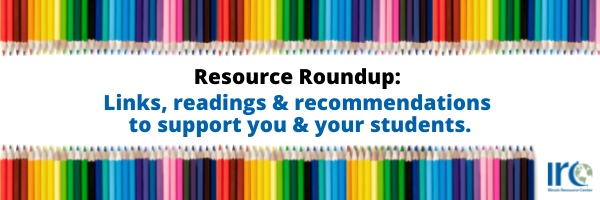 |
Over the past few months, the IRC has asked members of our community to nominate Illinois teachers working with multicultural, multilingual students who are going above and beyond, and now, we’re celebrating them and highlighting their work. Keep an eye out for these features in the coming months – and if you’d like to nominate someone, email leanet@cntrmail.org. Next up is Jeannette Borjon, a multilingual teacher from District 201 in Minooka.
Says Erika Martinez, who nominated her: “This is Jeannette’s first year as a Multilingual teacher. Her caseload is made up of K-4 students who are in general education and also our autism specialized classrooms. Watching Jeannette work with students in small groups, pushing into their room, or 1:1 is so inspiring. She has a very gentle and calm demeanor that allows her students to feel welcomed and successful with her. She works diligently to work on supporting curriculum as well as ell strategies in order to make sure that all of her students are well supported. She is an amazing teacher and advocate for her students as well as goes above and beyond to build relationship with her colleagues and the students’ families! As an ML teacher, she wears many hats that she easily juggles!”
Jeannette Borjon works with multilingual students from Kindergarten through 4th grade, meaning a variety of different needs and language proficiency levels. But across her different classrooms and approaches, one thing remains consistent in her philosophy: students learn best by doing.
“I love to take a play-based language learning approach,” Borjon says. “I feel that I can really engage the students using games, role playing, or music,and I find they really respond well to that and they are excited to learn. They don’t even know they’re learning, they’re just doing, and I see a big difference in the language they are producing based on that approach.”
Borjon works to engage the senses to promote learning and vocabulary. For example, her younger students were learning about the seasons, so she brought in things they could see and touch. Students practiced putting on gloves and mittens, and made snowballs out of play dough. She says the staff and administrators in her district are doing a great job working with students and she sees a lot of play-based learning and it promotes student engagement, and she hopes to see that continue and grow.
In the classroom, Borjon is a big fan of using TPR, or Total Physical Response, a movement-based approach to language learning that is quite popular. “We’re acting out a lot of the words that we’re learning in different contexts so they can apply them,” she says. “We also watch short videos that the students can engage with and discuss to help them build that background knowledge.”
Wearing a lot of hats can be a challenge, as Borjon works with a wide variety of grade levels and works with both general education and autism-specialized classes. “I think one of the things I have learned to do this year is really prioritize what needs to be done,” she says. “I work with teachers to make sure that students are being supported in their classrooms and make sure that I am communicating with students’ parents and help translate, making sure I am prioritizing what is the most important.”
Family engagement is one of those priorities for Borjon, and she works to have open communication with parents. She uses the Seesaw app to take photos and snippets to share with parents and families to show what their students are doing in school. “By inviting the parents into that small snippet into what they’re doing in school, they feel like they’re a part of their students’ learning,” she says.
She advises her fellow educators to get to know their students as individuals first to be able to meet their needs. “Every student is different, regardless of what language proficiency they’re at,” she says. “So bring in the things that they’re interested in and they’re more likely to be engaged and respond positively.”


